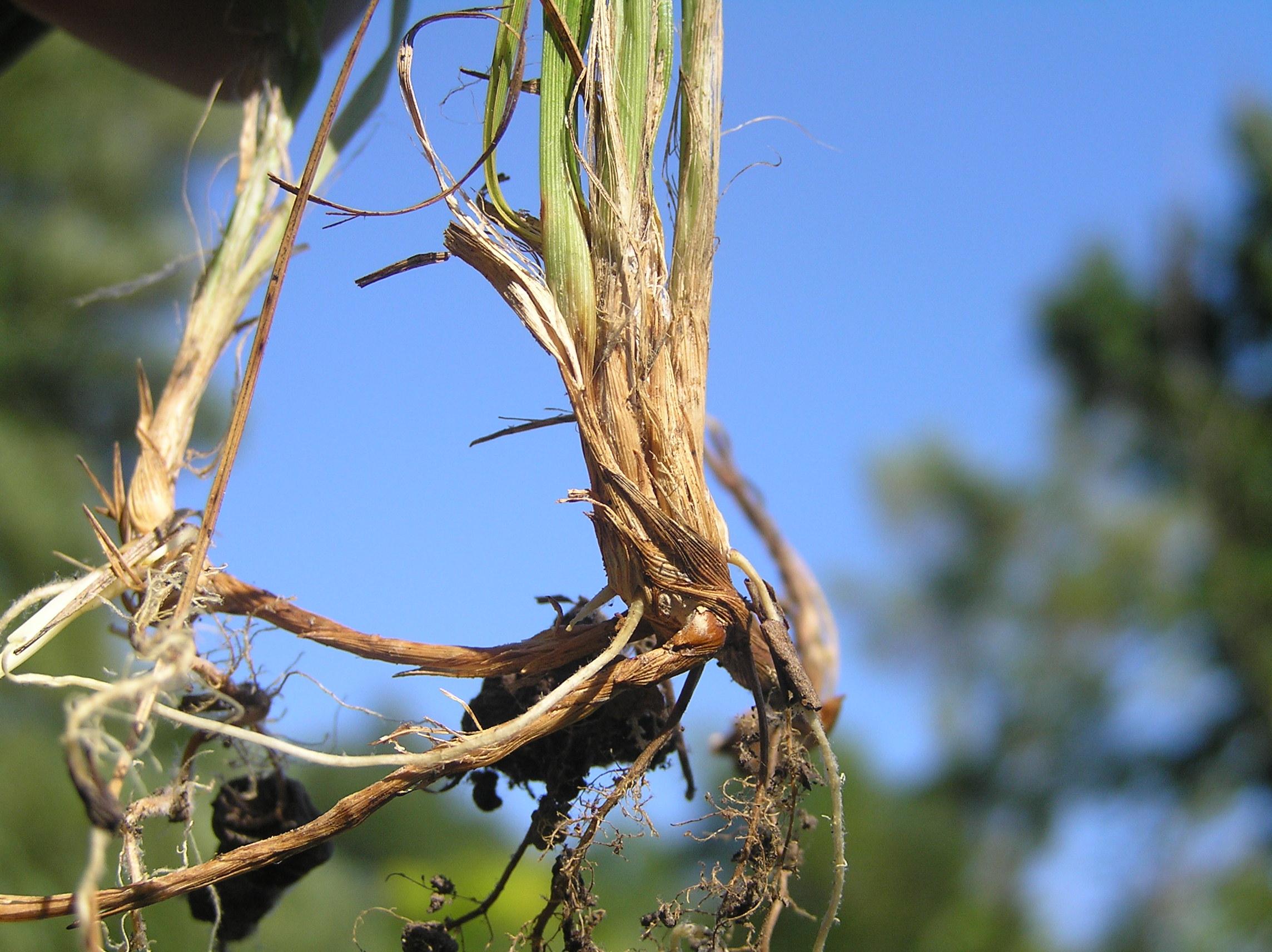
Root stem and crown rot
Fusarium Pythium Phytophthora and Rhizoctonia
What are Root, stem, and crown rots (Fusarium Pythium, Phytophthora, and Rhizoctonia spp.)?
Root, stem, and crown rots caused by Fusarium, Pythium, Phytophthora, and Rhizoctonia species are fungal diseases that infect the roots and crowns of plants, including flowers. These pathogens can cause symptoms such as wilting, yellowing foliage, stunted growth, and decayed roots or stems. Infected roots and stems may be dark, soft, easily break off, or have brownish tips. In seedlings, failure to emerge and seed rot can occur. These diseases have a wide distribution and can affect various plant species.
How do Root, stem, and crown rots (Fusarium Pythium, Phytophthora, and Rhizoctonia spp.) occur?
Fusarium, Pythium, Phytophthora, and Rhizoctonia reproduce and spread through spores or mycelium present in soil, plant debris, or infected plants. They are introduced through contaminated seeds, tools, or by wind, water, and insects. When favorable conditions arise, such as moisture and susceptible host plants, they infect roots and crowns, causing rot. The fungi reproduce by producing more spores or mycelium, allowing them to spread and continue the cycle of infection.
Symptoms
1 - Effects on Plants
• Infected plants experience wilting and yellowing due to impaired water and nutrient uptake causing Stunted Growth. • Pathogens cause decay and softening of roots and stem, making them prone to breakage and structural damage. Severe infections result in reduced crop yield or complete loss of plants.
2 - Effects on Soil
Diseased plants contribute to nutrient imbalances in the soil. Pathogens break down organic matter, leading to soil degradation. Additionally continuous infections result in declining soil health and fertility.
3 - Environmental Impact
• Infected plants spread pathogens to neighboring plants. Root rots disrupt soil microbial communities and ecological balance. • Severe infections impact biodiversity by affecting vital food sources and habitats.
Solutions
1 - Prevention
• Start with healthy, disease-free plants and seeds from reputable sources. • Plant at the correct depth, ensuring the crown or stem is not buried. • Plant in well-drained soil or consider raised beds to prevent waterlogging. • Avoid planting susceptible species in the same area year after year. • Water plants properly, avoiding overwatering or excessive moisture in the root zone.
2 - • Cultural Practices
• Maintain proper plant nutrition, optimize watering practices, and provide suitable growing conditions to enhance plant health and resistance. • If possible, rotate susceptible plants with non-host species to disrupt disease cycles. • Consider incorporating organic matter or compost into the soil to improve overall soil health and resilience against pathogens. • Remove and destroy infected plant debris to minimize pathogen survival and spread.
3 - Treatment
• In severe cases, targeted fungicides may be used including azoxystrobin, thiophanate-methyl, and metalaxyl. Consult with local agricultural extension services or experts for appropriate fungicide recommendations. • Some Biological control agents such as Trichoderma spp. and Bacillus subtilis can be effective in suppressing these pathogens. Consult with local experts for specific product recommendations and ensure compliance with regulations.
